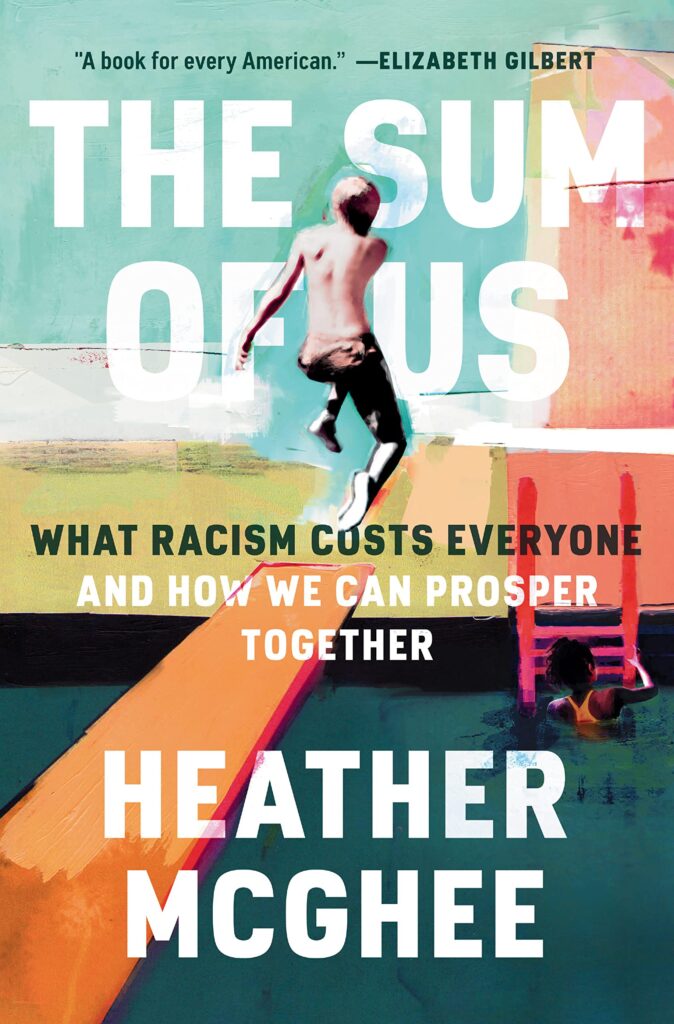John Neal
A country as wealthy as the U.S. could easily provide a healthy level of financial security and equal opportunity to all its citizens. So why doesn’t it do this? Author Heather McGhee says a significant contributor to the unwillingness to do this is a false narrative the conservative media has effectively spread to non-wealthy whites. That falsehood is that the economic pie is only so big; if some people take more, others will have less. They aim mainly at programs conservative pundits falsely claim will benefit Blacks and other people of color at the expense of whites. The author calls this the zero-sum deception.
Winners and Losers
The origin of the concept that there can only be winners or losers was entrenched in our nation’s history on a model of freedom built on slavery. You were free if you were white and enslaved if you were Black. The “freedom” poor whites had caused 80% of the confederate soldiers who owned no enslaved people to fight for an illusionary cause. In The Sum of Us, McGhee notes that after Reconstruction failed, Black exclusion continued in every facet of American society. Many poor whites bought into the myth of racial superiority, frequently even when it meant deprivation to themselves. She cites the 20th-century example when whites would literally drain their public swimming pools rather than share them with Blacks.

Going Without
“The pool of national health insurance would have been mainly for white Americans, but the threat of sharing it with even a small number of Black and brown Americans helped doom the entire plan from the start.” Another example provided by the author is the new “debt-for diploma system”. As recently as 1976 state governments were paying 60% of public college costs. As minorities began to become a larger percentage of the student bodies, states cut back, while tuition costs have “nearly tripled since 1991.” Now eight in ten Black graduates have to borrow but so do over 60% of white students. “How is it fair and how is it smart to price a degree out of reach for the working class?”
Stoking Racism
Modern-day racist media stoke this racial resentment among whites by trying to convince them that following the success of the civil rights era, we have fulfilled our American dream of living in an egalitarian society. Racism based on skin color is a thing of the past. In today’s world, so the lie continues, winners and losers are based on individual efforts and skills. Suppose Blacks and other people of color sometimes fail. In that case, it is because of personal character flaws or cultural shortcomings such as not trying hard enough or asking and receiving too many favors or handouts. McGhee cites Rush Limbaugh as an example of stoking racism when he said of Obamacare, “This is a civil rights bill, this is reparations, whatever you want to call it.” The failure to extend Medicaid when the Supreme Court made it optional, is another example. The author cites a study which found “as the percentage of the black population rises, the likelihood of adoption decreases.”
Discrimination Continues
Of course, the author makes the straightforward and well-documented case many others have made. Namely, institutional racism is embedded and excludes racial and ethnic minorities’ equal access “from finance to education to employment to housing.” Moreover, past injustices have long-term effects. For example, McGhee references a recent Federal Reserve Bank of Chicago study that concludes redlining of Black neighborhoods in the 1930s, thus excluding them from home ownership, accounts for as much as half of today’s racial disparity in housing values and homeownership for Blacks households. This book chronicles these social system failures in the economic arena and the political one. The author does so in comprehensive fashion, with over 100 pages of notes buttressing the book’s ten chapters.
In the end, McGhee concludes whites must come to understand we do not live in an egalitarian post-racial society. And whites need to understand how their implicit biases continue to harm the direct victims of racism as well as themselves.









